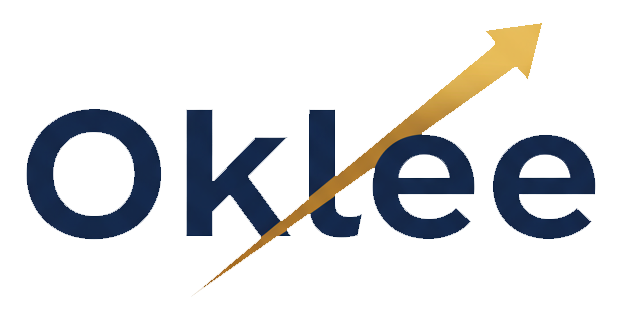Starting a home-based food business is one of the most affordable ways to become an entrepreneur. Whether you’re baking cookies, bottling hot sauce, or launching a healthy meal-prep service, you can begin right from your kitchen.
But even small food businesses need some startup cash. Equipment, licenses, ingredients, packaging—it adds up quickly. And not everyone has thousands of dollars on hand.
The good news? There are several types of small business loans and food business funding programs available for startups—especially ones focused on local or home-based food production.
In this guide, we’ll walk you through the best options, who they’re for, and how to apply.
Why You Might Need a Loan for a Home-Based Food Business
Even if you’re operating from home, a food business involves costs such as:
- Kitchen upgrades or equipment (mixers, fridges, etc.)
- Licensing and permits (food handler’s certificate, business registration)
- Ingredients and packaging
- Branding and marketing
- Delivery or transportation
- Initial inventory or supplies
Many new business owners underestimate these expenses. A small business loan can help you get started the right way—without draining your savings.
1. SBA Microloans
Best For: Entrepreneurs with a solid business plan but little collateral or credit history.
The Small Business Administration (SBA) offers microloans up to $50,000 for small startups, including home-based businesses. While the SBA doesn’t lend directly, they partner with local lenders and community organizations.
Highlights:
- Loan amounts: $500 to $50,000
- Average interest: 8%–13%
- Repayment terms: Up to 6 years
- Flexible on credit if you have a strong business plan
Many SBA-approved lenders also offer free business training and help with licensing or budgeting—perfect for first-time entrepreneurs.
🔗 Check your local SBA-approved microloan providers through sba.gov.
2. Kiva Loans
Best For: Entrepreneurs with strong local support but limited financial history.
Kiva is a nonprofit platform offering 0% interest loans up to $15,000. It’s community-backed, meaning friends, family, or supporters fund your initial goal, and then Kiva matches it with outside lenders.
Highlights:
- Loan amounts: Up to $15,000
- Interest: 0%
- No credit check or collateral required
- Great for food startups with community ties
If your food business has a social or local mission—such as sourcing locally or serving your neighborhood—Kiva is a strong option.
3. Accion Opportunity Fund
Best For: Minority-owned, women-owned, and underserved businesses.
Accion is a nonprofit lender that specializes in supporting small businesses with flexible funding. They work with food entrepreneurs, especially those from underrepresented backgrounds.
Highlights:
- Loans from $5,000 to $100,000
- Competitive interest rates
- Business coaching and resources included
- Focus on startups with clear goals
They’re one of the few lenders willing to work with borrowers who have lower credit scores or no previous business history.
4. Local Economic Development Agencies & Food Incubators
Best For: Home-based businesses tied to their city or region.
Many local governments and nonprofits offer funding or grants for small food businesses—especially if your business helps promote health, sustainability, or local job creation.
You might also qualify for:
- Low-interest startup loans
- Equipment financing
- Cash grants
- Access to shared commercial kitchens (which can reduce your startup costs)
Pro tip: Search for “small business grant + [your city/state]” or connect with your city’s Small Business Development Center (SBDC).
5. Online Small Business Loan Platforms
Best For: Businesses with a basic credit history and immediate funding needs.
If you want a faster process than banks or nonprofits offer, you can try online lenders. These platforms offer funding in as little as 1–3 days—but usually at higher interest rates.
Top platforms include:
- Lendio – Matches you with multiple lenders
- Fundbox – Offers lines of credit for inventory or daily expenses
- BlueVine – Known for quick approvals and simple applications
Caution: Make sure to read the terms carefully. Avoid loans with high origination fees or APRs above 20% unless you really need short-term funding.
6. USDA Food Business Loans
Best For: Rural food businesses or agricultural startups.
The U.S. Department of Agriculture (USDA) offers several loan programs for small food producers. These are ideal if your food business involves growing ingredients, processing local foods, or distributing in rural areas.
Programs to explore:
- USDA Business & Industry Loan Guarantees
- Rural Microentrepreneur Assistance Program (RMAP)
- Local Food Promotion Program (LFPP) – includes some grant funding
🔗 Visit usda.gov/funding-programs to explore your options.
7. Business Credit Cards (With Caution)
Best For: Low upfront needs and experienced borrowers.
If you’re launching your business with a small budget (under $5,000), a 0% APR business credit card can give you short-term flexibility. But it’s important to use this option responsibly.
What to look for:
- 0% APR for 12+ months
- No annual fee
- Cash back on food or business supplies
Only use a credit card if you can repay before interest kicks in. It’s not a long-term funding solution but can be useful early on.
8. Crowdfunding (Kickstarter, Indiegogo)
Best For: Unique food products or strong personal brands.
If you’re selling a packaged food item (snack, sauce, spice blend), crowdfunding can work well. Platforms like Kickstarter let you raise money by offering pre-orders or gifts in exchange.
It takes effort, but if done right, you get:
- Capital without giving up ownership
- Marketing buzz
- Early customer feedback
Not ideal for meal prep or service-based food businesses, but great for shelf-stable products.

How to Prepare Before You Apply
Regardless of where you apply, you’ll need to show lenders that your food business is serious and well-planned. Here’s what to prepare:
✅ Business plan – Describe your food concept, target market, and how you’ll make money
✅ Startup budget – Know exactly what the funds will be used for
✅ Financials – Even if you haven’t started, outline estimated sales, expenses, and profit
✅ Licenses and permits – Be ready to show you’re operating legally
✅ Personal credit info – Most lenders will check your credit score
Final Thoughts
Starting a food business from home is more accessible than ever—but getting funding is still a key step. The right small business loan or food business funding option can help you launch with confidence, without going deep into personal debt.
Whether you go with a nonprofit microloan, a government-backed grant, or a crowdfunding campaign, make sure it aligns with your goals and timeline. And above all—only borrow what you actually need.
Want more tips on starting your food business the smart way?
Sign up for the newsletter at oklee.online for weekly insights on startup funding, investment planning, and building long-term financial success.


